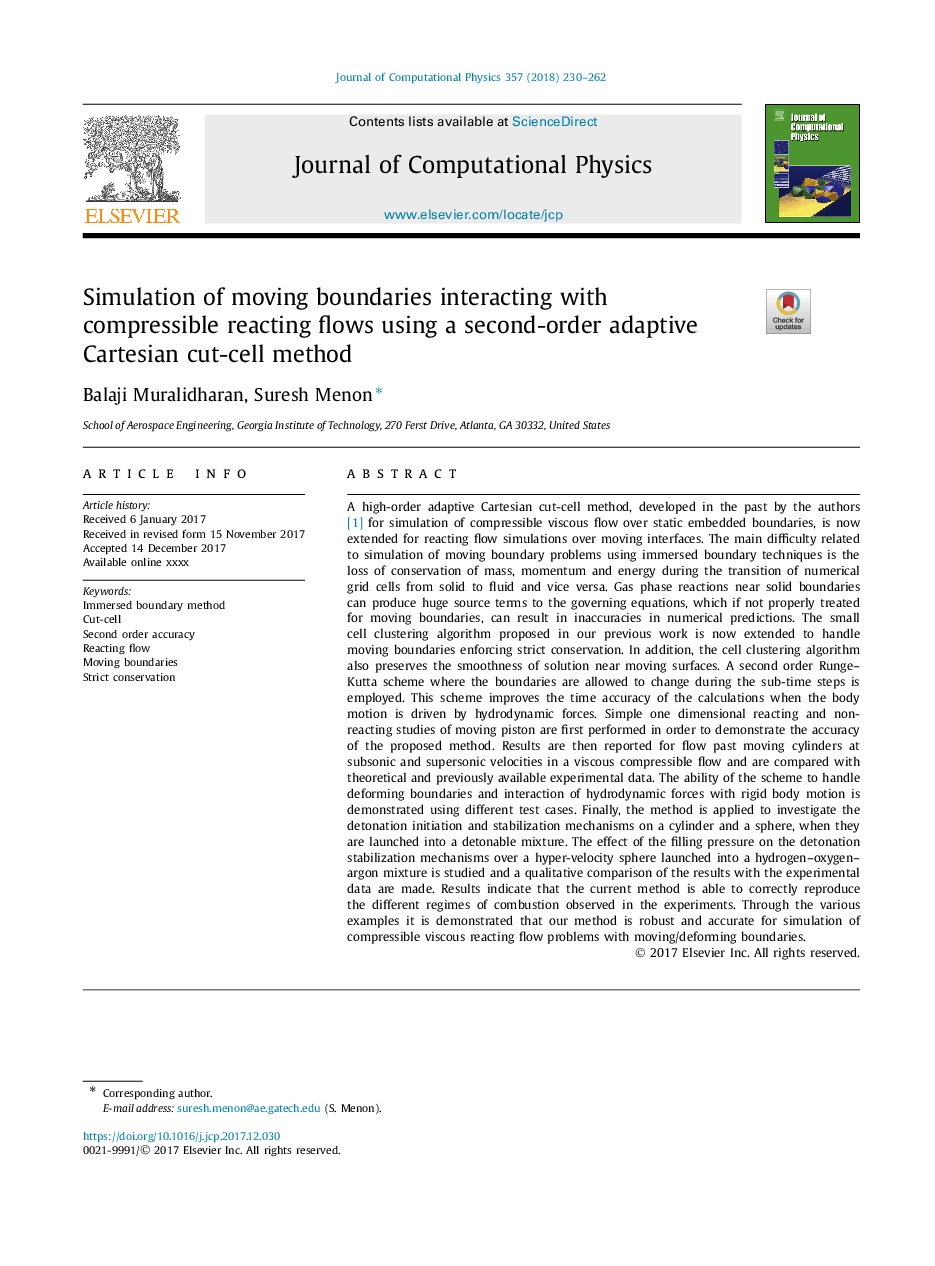| کد مقاله | کد نشریه | سال انتشار | مقاله انگلیسی | نسخه تمام متن |
|---|---|---|---|---|
| 6929128 | 1449356 | 2018 | 33 صفحه PDF | دانلود رایگان |
عنوان انگلیسی مقاله ISI
Simulation of moving boundaries interacting with compressible reacting flows using a second-order adaptive Cartesian cut-cell method
ترجمه فارسی عنوان
شبیه سازی مرزهای متحرک در ارتباط با جریان های واکنش فشرده با استفاده از روش برش سلولی تطبیقی دکارتی دوم مرتبه دوم
دانلود مقاله + سفارش ترجمه
دانلود مقاله ISI انگلیسی
رایگان برای ایرانیان
کلمات کلیدی
روش مرزی غوطه ور، برش سلولی، دقت مرتبه دوم، واکنش جریان، مرزهای حرکتی، حفاظت دقیق
موضوعات مرتبط
مهندسی و علوم پایه
مهندسی کامپیوتر
نرم افزارهای علوم کامپیوتر
چکیده انگلیسی
A high-order adaptive Cartesian cut-cell method, developed in the past by the authors [1] for simulation of compressible viscous flow over static embedded boundaries, is now extended for reacting flow simulations over moving interfaces. The main difficulty related to simulation of moving boundary problems using immersed boundary techniques is the loss of conservation of mass, momentum and energy during the transition of numerical grid cells from solid to fluid and vice versa. Gas phase reactions near solid boundaries can produce huge source terms to the governing equations, which if not properly treated for moving boundaries, can result in inaccuracies in numerical predictions. The small cell clustering algorithm proposed in our previous work is now extended to handle moving boundaries enforcing strict conservation. In addition, the cell clustering algorithm also preserves the smoothness of solution near moving surfaces. A second order Runge-Kutta scheme where the boundaries are allowed to change during the sub-time steps is employed. This scheme improves the time accuracy of the calculations when the body motion is driven by hydrodynamic forces. Simple one dimensional reacting and non-reacting studies of moving piston are first performed in order to demonstrate the accuracy of the proposed method. Results are then reported for flow past moving cylinders at subsonic and supersonic velocities in a viscous compressible flow and are compared with theoretical and previously available experimental data. The ability of the scheme to handle deforming boundaries and interaction of hydrodynamic forces with rigid body motion is demonstrated using different test cases. Finally, the method is applied to investigate the detonation initiation and stabilization mechanisms on a cylinder and a sphere, when they are launched into a detonable mixture. The effect of the filling pressure on the detonation stabilization mechanisms over a hyper-velocity sphere launched into a hydrogen-oxygen-argon mixture is studied and a qualitative comparison of the results with the experimental data are made. Results indicate that the current method is able to correctly reproduce the different regimes of combustion observed in the experiments. Through the various examples it is demonstrated that our method is robust and accurate for simulation of compressible viscous reacting flow problems with moving/deforming boundaries.
ناشر
Database: Elsevier - ScienceDirect (ساینس دایرکت)
Journal: Journal of Computational Physics - Volume 357, 15 March 2018, Pages 230-262
Journal: Journal of Computational Physics - Volume 357, 15 March 2018, Pages 230-262
نویسندگان
Balaji Muralidharan, Suresh Menon,
